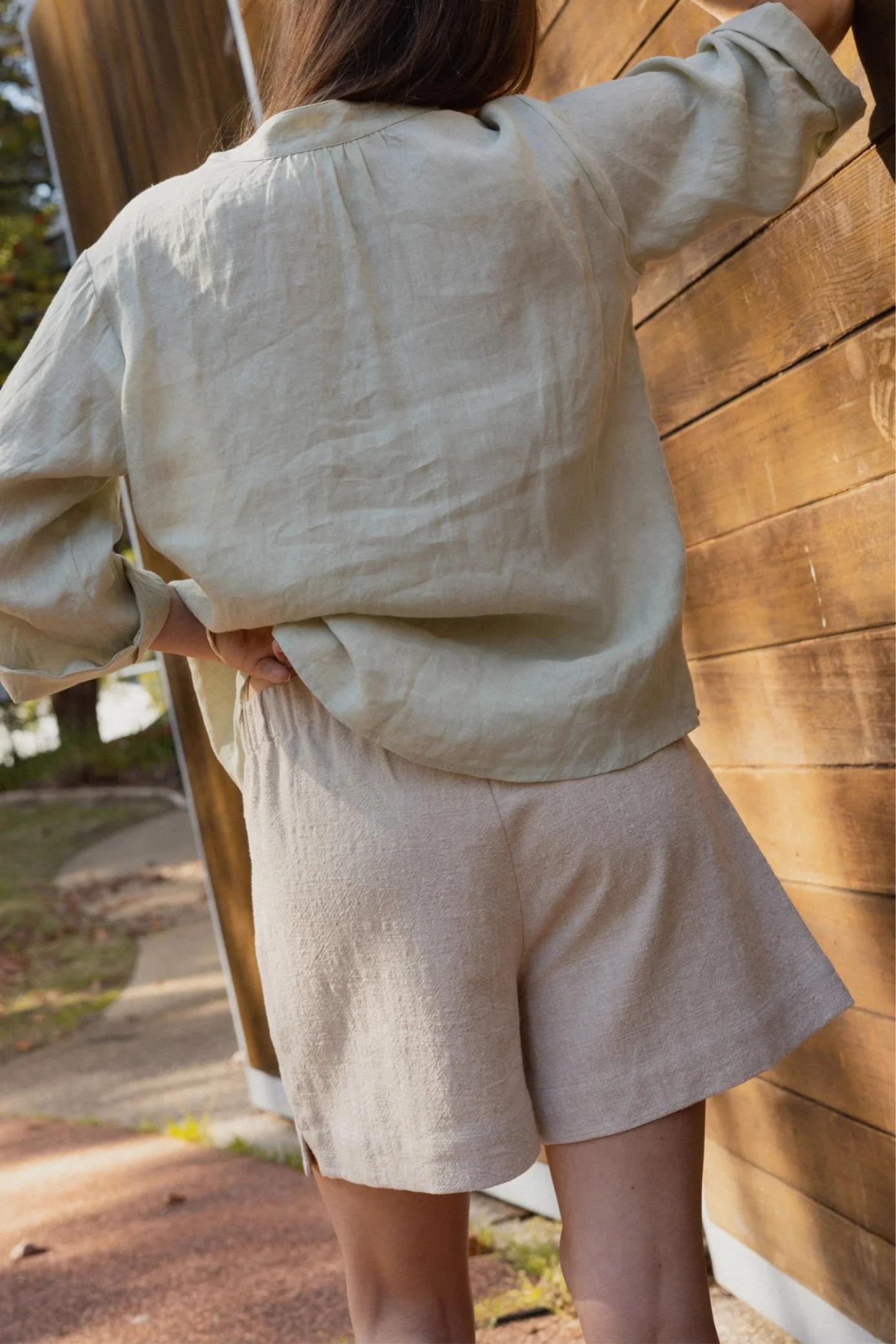Care Guide
Caring for your KM pieces - a guide to helping your garments last as long as possible and causing the least harm to the environment in the process
-
Wash less and only when necessary, opt for handwashing over machine washing. It’s kinder on your clothing and on the environment
-
Use a minimal amount of an environmentally friendly gentle all-natural liquid detergent when hand or machine washing. Wool requires a special neutral ph, mild wool detergent this will help to prolong the lifespan of your woolen garments. Please do not use a softener with your woolen knits as this can encourage ‘pilling’
-
Treat stains and spots right away, use a soft garment brush and brush lengthwise to remove surface soil which can develop into stains and give a dull appearance to your pieces. Use a clean damp cloth or an eco-friendly baby wipe to gently dab and work into the stain to remove.
-
Avoid tumble drying, instead line dry your clothing using hangers or carefully attach to line using pegs onto seams
-
Always dry out of direct sunlight, as the sun may cause bleaching
-
Airing garments in fresh air on a suitable hanger prior to putting away will also extend the time needed between washes.
How to handwash your KM garments
-
As though making a bubble bath - fill your sink with cool water and while it is filling ad your all-natural gentle liquid detergent, stir to completely dissolve. If using powder detergent it is always best to pre-dissolve the detergent prior to adding to the wash. This helps to prevent concentrated specks of detergent from coming into contact with the clothes, which may cause holes.
-
Completely immerse your garment under the water and let the water and detergent soak through it.
-
Removing stains - Put a clean folded tea towel on the bench and rest the part of the garment with the stain onto the tea towel, use your finger tips to gently work a natural stain remover or detergent into the stain. The tea towel soaks up excess water and detergent and gives you a surface to support the garment.
-
Soak your garment again and swish around in the water, gently squeezing the soapy water through the garment several times. Do not scrunch, wring, twist or rub as this can distort or damage the fibres.
Rinsing
-
To rinse the soapy water from your garment fill the sink with clean cold water and move your garment back and forth until there is no sign of suds. You may need to fill your sink a couple of times with fresh clean water.
-
Remove excess water by scooping your garment out of the sink whilst supporting it with both hands (as many fabrics are at their most delicate when wet.) Let the water run from the garment as much as possible and gently squeeze if necessary. Or lay flat onto a towel then roll up the towel to gently squeeze and absorb excess water from your garment.
Line Drying
-
Line dry your garment inside out and out of direct sunlight to avoid fading. Hang your garment on a shaped or padded garment hanger smoothing out collars, cuffs, and hems and reshaping any areas you feel need it. This reduces the need to iron as your garment naturally smoothes as it dries.
Ironing
-
To press your garments, iron on the wrong side using steam. If pressing on the right side is required place a clean white tea towel beneath your iron to protect your garment, and press through it using steam.
Dry Cleaning
Sometimes Dry Cleaning is the only washing method able to be done as machine or hand washing will damage the garment. If dry cleaning is required this will be stated on the care label located in the side seam of your garment. Most of our garments are able to be dry cleaned, check that dry clean is listed on the care label.
When dry cleaning we recommend using an Eco dry cleaner. Traditional dry cleaning is not ‘dry’ at all, but instead uses potentially harmful liquid chemical solvents. Green dry cleaning uses a silicone solvent which is a by-product of sand, or what is called a ‘professional wet clean’ which uses water rather than chemicals combined with special detergents through a computer-controlled wash and dry machine to clean your garment. Both these methods are much less toxic.






